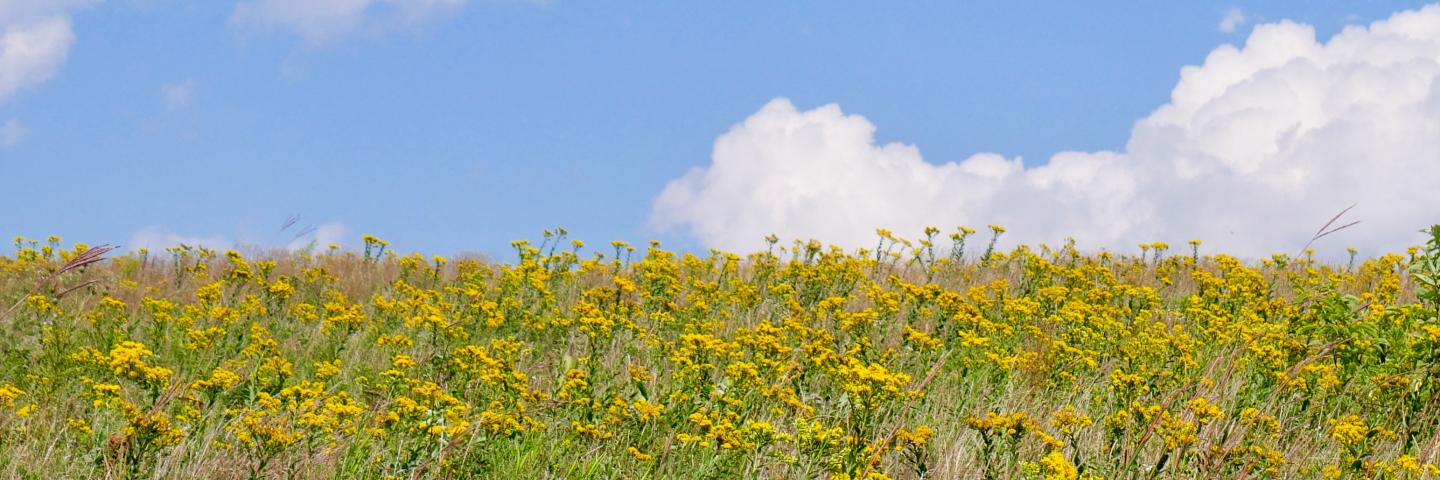Wildlife Habitat Meets the Bees Needs and More

With the help of NRCS and through the Conservation Stewardship Program, retired Department of Natural Resources Engineer, James Crawford, and his wife Carol turned a Brown County derelict dairy farm into the ‘bee’s knees’ for pollinators to thrive.
Background
In 1987, James and Carol Crawford of Denmark, Wisconsin purchased a degraded dairy farm in Brown County. Shortly after that purchase, they enrolled in the Farm Service Agency (FSA) Conservation Reserve Program (CRP) to plant 20,000 trees on the property. As a retired Department of Natural Resources Air Resources Engineer, James had two main goals for his property: carbon sequestration and establishing wildlife habitat. As the planting developed and nearby farming increased in intensity, the Crawford’s property became an oasis for wildlife. James partnered with the Natural Resources Conservation Service (NRCS) to make his acreage the ‘bee’s knees’ for a host of pollinators to thrive.
Highlights
Thirty years after planting, James recognized the growing need for technical assistance to manage this forested area in a way that would continue to meet the Crawford’s goals. James reached out to the NRCS Green Bay Service Center and worked with staff to come up with a plan for his 60 acres of forest land and 15 acres of cropland.
After discussing conservation practices and NRCS financial assistance programs, the Crawfords decided to utilize the Conservation Stewardship Program (CSP) to implement a timber stand improvement plan that would reduce the forest stand density and implement a native prairie planting on the cropland acres.
The treatment plan designed by NRCS staff worked to open the forest canopy by removing every fourth row of trees in the timber stand, allowing the remaining trees to grow much faster and sink (absorb) more carbon. The harvested trees were left to decompose where they fell, feeding the biology in the soil and promoting “regenerative agriculture” through additional soil carbon sequestration.
The cropland acres had previously been farmed with conventional tillage methods, which releases (burns) more carbon than it stores. To further improve their carbon storage and meet their diverse wildlife goals, the Crawfords planted a prairie mix of native grasses and forbs designed to both target pollinators and build deep carbon-rich soil.
Initially, James was apprehensive about the pollinator stand mix, reporting “the first couple years, had a lot of weeds come up that we had to mow several times a year to keep them from proliferating.” NRCS Resource Conservationist Myles Elsen reminded James that fighting weeds in the initial stages of a native seed planting is normal. The rule of thumb for native seed planting goes— “sleep, creep, leap,” — the first year the plants sleep, the second year they creep and the third year they leap.
Future Plans
Unfortunately, with native habitat in an otherwise forested ecological region, there can be issues with encroachment when the prairie stand is not heavy on grasses. The Cottonwood from the forested area adjacent to the Crawford’s property has begun seeding itself amongst their prairie planting. Left unmanaged, the seedlings outgrow the prairie flowers, effectively stamping out their efforts to create a diverse stand for pollinator and wildlife. James plans to pursue additional NRCS cost-share programs to continue learning about conservation practices that will help him win the seedling battle and maintain the ‘bee’s knees’ of pollinator plantings.
Additional Information
Conservation Stewardship Program - Wisconsin
The Conservation Stewardship Program (CSP) can help you identify natural resource problems in your operation and provide technical and financial assistance to solve those problems or attain higher stewardship levels in an environmentally beneficial and cost-effective manner.
Learn More

